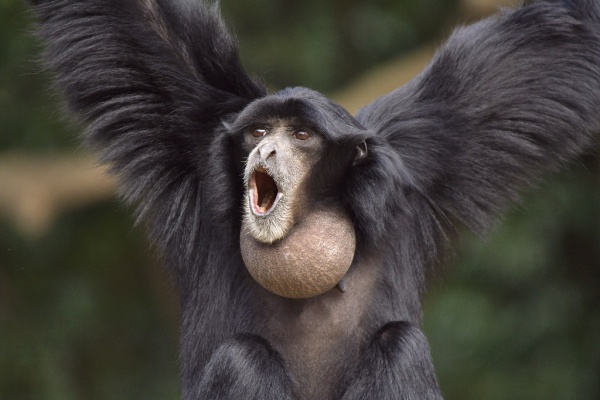Facts About Siamang
The siamang is a large, black-furred gibbon native to Indonesia, Malaysia, and Thailand. As the largest gibbon species, it can reach up to one meter in height and weigh approximately 14 kilograms. Unique to its genus, Symphalangus, the siamang is distinguished by its partially webbed toes and a prominent throat pouch that amplifies its loud calls.
These arboreal primates inhabit forests but face increasing threats from habitat destruction due to palm oil production, illegal logging, and urban development. They are also victims of the illegal pet trade and hunting. Fortunately, conservation efforts are in place, with siamangs residing in protected areas across their native countries.
Siamangs typically live in small family groups and are primarily frugivorous, meaning they mainly consume fruit. They practice monogamous mating and exhibit various social behaviors. Vocal communication is vital for them, particularly for territorial marking. Their loud calls play a crucial role in both defending their territory and interacting with other groups.
The survival of siamangs heavily relies on preserving their forest habitats and combating illegal activities such as poaching and logging. By protecting their natural environment and addressing these threats, conservationists aim to secure the future of this unique and endangered gibbon species.

 Malaysia
Malaysia